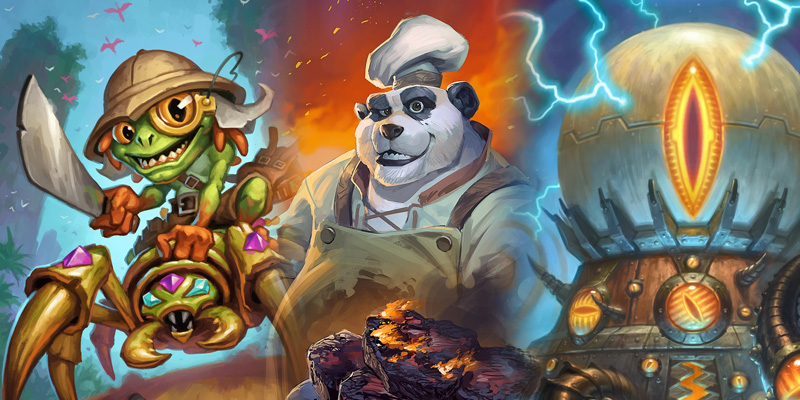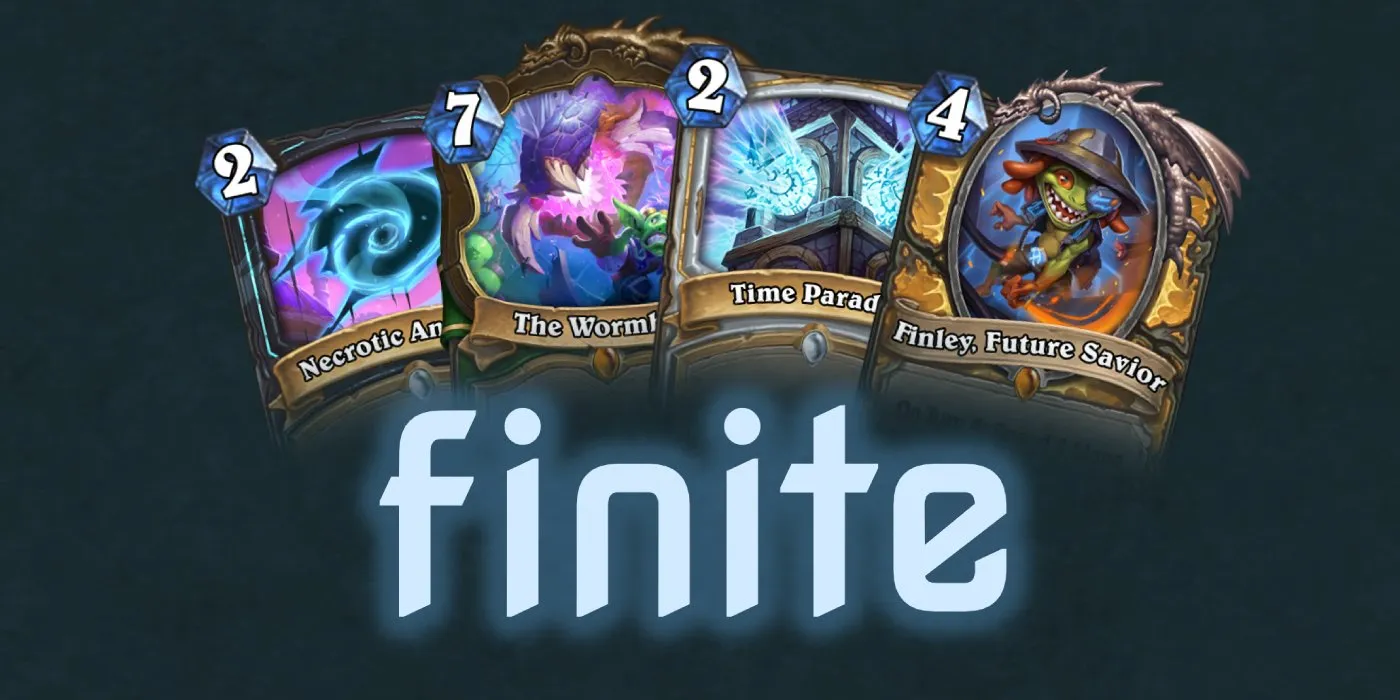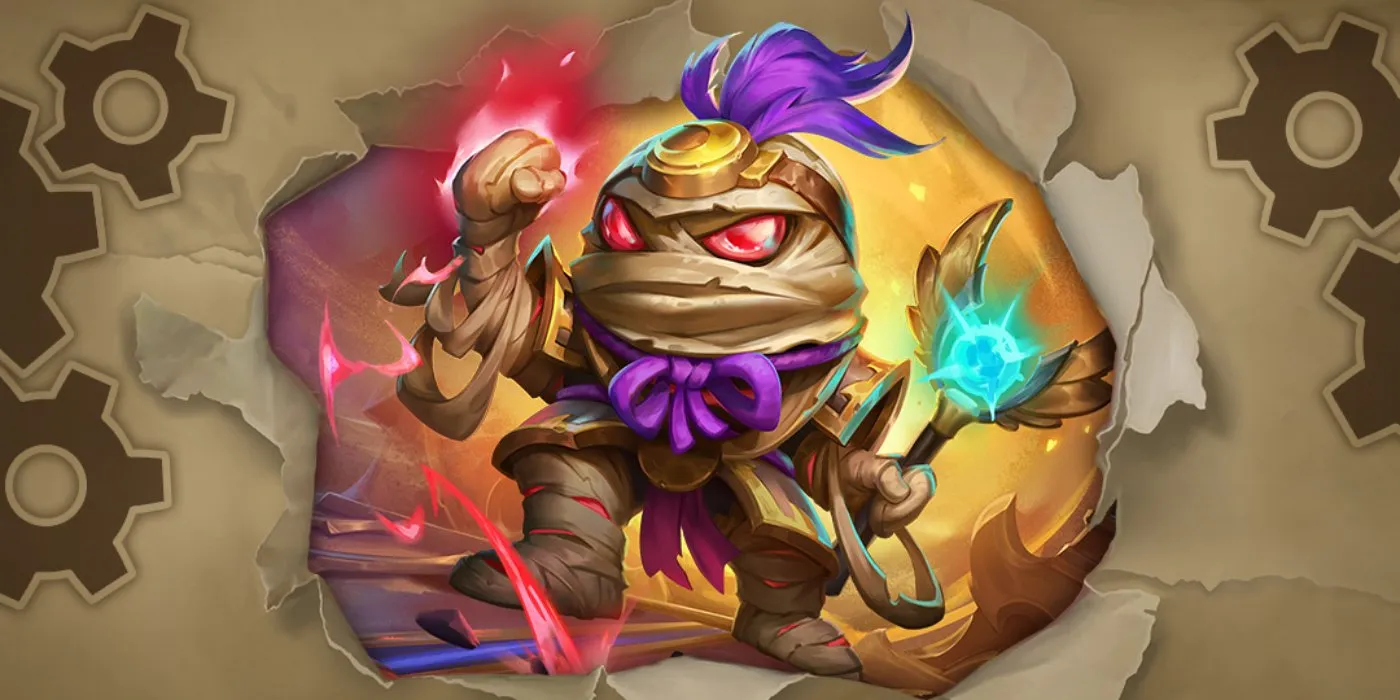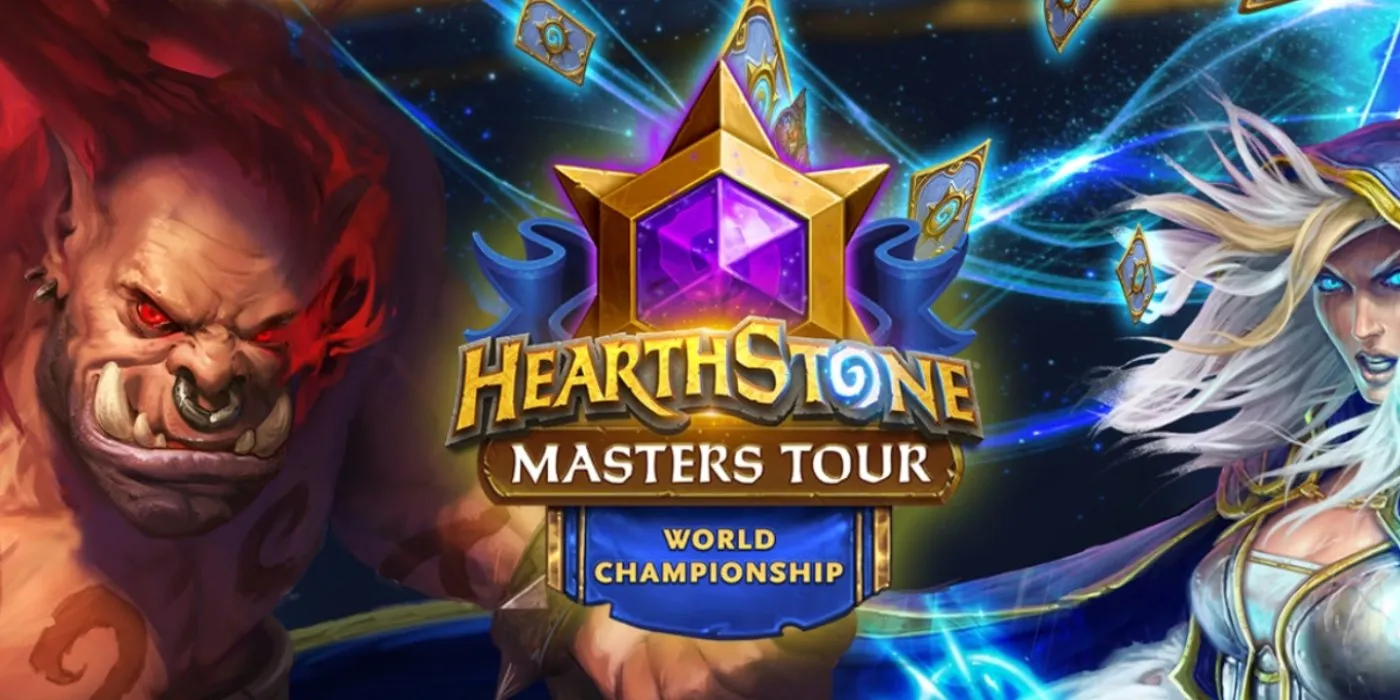The metagame has not changed much at all since last week, that's not necessarily a bad thing, but that's the typical state Hearthstone reaches 6-8 weeks into a new expansion. The most meta-defining deck in the game is Combo Priest; it is oppressive at high ranks, and the only decks that stand a chance are Highlander Hunter and Control Warrior. We also see a large number of Quest Shaman and Quest Druid decks, both of which play like control decks with powerful late-game win conditions.
Grandmasters has featured some of the most interesting matchups due to the success of combo decks against slower matchups such as Malygos Druid and Shirvalla OTK Paladin. There is a newcomer deck this week in Highlander Paladin; I believe Trump is being credited with the decklist that finally gained a positive winrate. We feature the best version of Highlander Paladin from HSReplay, the most popular Quest Druid from Bloodyface's GM games, and Mecha'thun Quest Warlock which was a fun, but shocking choice for GM by ETC and Monsanto.
A Word about Highlander Decks
I imagine that those unfamiliar with the history of Reno, Singleton or Highlander decks wonder how on earth we came to agree to call them by this name. Singleton is a rather straightforward term, so we'll leave it as is, a dictionary search of singleton should explain it. There is an old 80s movie called "Highlander" with an intense theme: "There can be only one!!!". The movie revolved around an immortal race of men destined to fight each other in battle until only one of them remained standing to gain ultimate power and remain the only immortal on the planet. It’s worth a watch for the memes alone. Sean Connery was mysteriously chosen to portray an Egyptian swords master, Juan Sanchez Villa-Lobos Ramirez. He teaches the main character, Connor Macleod. This movie is the origin of the name Highlander Decks; there can be only 1 copy of each card in your deck. By having only one copy, you enable incredibly powerful cards to take their full effect. This originated with the original Reno Jackson from League of Explorers because he would heal your hero to full health when played, thus adding the name Reno Decks to the pool of names. We also had a series of Highlander cards for the Kabal in Mean Streets of Gadgetzan. Kazakus was a powerhouse that could get you out of many tricky situations and anyone who played Hearthstone when Shadowreaper Anduin + Raza the Chained existed, remembers one of the most powerful combo decks ever. Over the years, Highlander decks have been a style of play that many have embraced and loved.
With the Saviors of Uldum we have 5 new Highlander cards: Zephrys the Great, Dinotamer Brann, Elise the Enlightened, Sir Finley of the Sands, and Reno the Relicologist. All 5 cards are incredibly powerful, with the ultimate being Zephrys the Great, literally the perfect card. Zephrys the Great is so powerful, that even classes without any singleton synergy have built decks solely around him.
These decks have so many tech and deck-building choices that each game feels unique. As of now, each of the Highlander class cards have found their place in the spotlight of top Hearthstone Decks. Highlander decks are here to stay for a few years, and it is a great thing!
Rock - Aggro
The term SMOrc comes to mind when I think of aggro.
Aggro is viewed as the most straightforward of the deck types for a beginner to understand and play. Your goal is to kill your opponent before they have a chance to stabilize the board, keep their life total outside your damage from hand, and you run out of cards to play. Your goal with an aggressive deck is always to balance how much damage you are dealing to your opponent each turn and fight for control of the board at each stage. Aggro thrives against Combo decks which sacrifice board presence, removal, and healing in order to play powerful combinations of cards that can win them the game. Aggro suffers against Control which focuses on removing all of your minions, healing and generating value, so they have more resources at the end of the game.
Featured Deck of the Week: Highlander Paladin
How to Play It
I have played quite a bit of Highlander Paladin this week, and it's a great deck. The deck centers around the two Highlander Cards in the deck: Zephrys the Great and Sir Finley of the Sands. We know what Zephrys the Great is capable of so I will focus on advice about Sir Finley of the Sands. Sir Finley of the Sands will give you an upgraded hero power, choose wisely. The best hero power largely depends on which cards you have in hand; it is outlined below for each matchup. You should always mulligan to try to get your best 2-drops early. If you have a 1-drop, just mulligan the rest, these cards are that impactful. Outside of the Highlander cards; this relies on powerful, reliable early game with a variety of 1-drops into Magic Carpet and History Buff which help it battle for the board. Paladin still snowballs mechs and sticky minions on-board better than any other class, and this alone will win games for you. Paladin has several efficient draw cards in Crystology and Salhet's Pride which help thin the deck, so you draw your most powerful cards faster. The end-game cards for the Highlander Paladin are Octosari and Tirion Fordring. Octosari can draw a combo (much more consistently than you might think) that deals 13 damage: Leeroy Jenkins + Blessing of Kings + Blessing of Might. This deck is a lot of fun and plays like a great Aggro Paladin deck that can push the game late if necessary.
Hero Power Selection Guide:
- Against Aggro: Mage Hero Power to fight for board or Druid Hero Power which fights for board and heals.
- Against Combo: Hunter, Rogue, or Mage are your best bets to get across the finish line and find lethal.
- Against Control: If you have Octosari in hand, you want the same things as you would for Combo. If you don't have Octosari, then you should go for draw with the Warlock Hero Power.
Only once was I not given any of the 'good' hero powers outlined above and given 3 bad choices.
The Paladin Hero power is actually bad in this deck, 2 1/1s don't do enough against any deck without the Odd Build-Around Package we used to see with [Hearthstone Card (Baku, the Mooneater) Not Found].
How to Beat It
This deck, and many others, get destroyed by a good Combo Priest player. I tried over and over again to beat the Priest and had very little success against Rank 1 and 2 players. Northshire Cleric, Wild Pyromancer, and Psychopomp really ruin the Highlander Paladin's day. The Highlander Paladin relies on snowballing the board to get damage, if you keep the board clean and stick your own you can win the matchup. This deck lacks significant burn damage from hand outside of Leeroy Jenkins and Zephrys the Great. If you can stay out of lethal range for both of those options, you will be able to run the Paladin out of resources. Good luck!
Paper - Control
Control is challenging because it takes practice to know what threats to expect from your opponent. The more knowledge you have of your opponent, the better you will perform. Control, typically, has a finite number of removal tools for individual minions and board clears. When playing this archetype each turn, you have to ask yourself a few questions: Do I need to remove this minion/board right now? How can I stabilize this board to keep it from getting out of control? How do I prevent lethal damage from my opponent's hand? By answering each of these questions, you learn when to clear the board and when to leave it, when you should be playing a taunt minion, and when you absolutely need to heal. Your end goal is how/when to stabilize and take full control of the game so your opponent cannot get back into the game. Control thrives against Aggro because eventually, all Aggro decks run out of cards; meaning that if you can keep the board, they will run out of steam and lose. Control suffers against Combo because it often lacks proactive plays to deal damage to the opponent, allowing Combo to play their combo pieces whenever they want.
Featured Deck of the Week: Quest Druid
How to Play It
Quest Druid has been around for a little while, and I have featured different versions of it in the past. The current, most powerful versions feature a late-game set of cards that win games once the game has gone on long enough: Elise the Enlightened to copy your hand, Chef Nomi or King Phaoris to build a large board to kill your opponent with, Zephrys the Great, and all of those can be copied by Flobbidinous Floop. The deck focuses on doing essentially nothing turns 1-5, followed by some of the most powerful mid-game turns Hearthstone has ever seen: Oasis Surger, Starfall, and Hidden Oasis all do incredibly powerful things depending on the situation. Nourish creates game-ending scenarios for Aggro and Midrange decks if they are not capable of lethal the following turn: 2 extra mana and a hand full of cards makes almost every game instantly winnable. The Pros are favoring this deck heavily and finding sustained success with it as the premier control, late-game threat deck for very good reason.
How to Beat It
You'll never guess which deck beats this one consistently. If you guessed Combo Priest, you're a winner! The Druid essentially does nothing in the early game, so early development that snowballs is the key to victory. The bigger the minion, the harder it is for the Druid to remove it and stabilize the board in their favor. Be wary of turns 5-7 though because the Druid will win in a hurry if you can't close the game out or extend it to get past a Hidden Oasis. If you find yourself going late with the Druid, you're going to have to find a way to push through their health total. With 2 Heal-12s and 2 Ferocious Howl you need to push through roughly 70 health over the course of the game. Another helpful tip is to assume that Worthy Expedition gave them the exact card they need, or you may put yourself in an unwinnable situation. Play early, play fast, and play big minions and this matchup is winnable.
Scissors - Combo
Combo is sometimes classified more like a game of solitaire than a game of Hearthstone. Historically, combo decks are assembled in a way that once you complete each step, you win the game with a lethal in one turn, known as a One-Turn-Kill (OTK) deck. However, the current state of Hearthstone has very few decks which are capable of this. Most combo decks execute a series of plays to set up incredibly powerful boards by cheating out discounted cards or an infinite source of large minions (think Pogohopper Rogue and Conjurers Calling Mage). Combo decks thrive against control because the control deck often does little to nothing to threaten lethal against you. Combo suffers against aggro because by running combo cards, you sacrifice removal and healing; allowing aggro to beat you before you complete the combo. Once a combo deck has played it's combo cards; it is almost unstoppable.
Featured Deck of the Week: Monsanto's Mecha'Thun Quest Warlock
How to Play It
This deck plays in the same as other Mecha'thun Warlocks before it: draw all of your cards, play Galvanizer to discount Mecha'thun, and once your hand is empty destroy Mecha'thun and your board in one turn with Plague of Flames. This version is not as powerful as the Bloodbloom + Cataclysm combo of last year, but it has a good winrate against slow decks that do essentially nothing. The deck uses Lackeys to keep control of the board in the early game and then cycles like crazy to get through the entire deck. The benefits of the Quest, [Hearthstone Card (Supreme Archeology) Not Found] are twofold: your cards get discounted to 0, making them easier to play, and you no longer lose health from lifetapping. This deck was brought for a reason by both ETC and Monsanto to Grandmasters. The gamble did not pay off, but they must have seen something powerful in the deck and brought it for a reason. Enjoy!
Combo Steps
- Draw all of your cards via [Hearthstone Card (Supreme Archeology) Not Found] and other methods.
- Play Galvanizer with Mecha'thun in hand to discount it by 1 (unless of course you made it cost 0) at some point during the game. Note: Do not play Galvanizer until both Plot Twist are played.
- Play all of your cards in hand.
- Play Mecha'thun + Plague of Flames to win the game.
How to Beat It
This deck loses hard to Combo Priest. Have you learned anything about the best deck in the game from this article yet? It struggles against incredibly aggro decks like Warrior, Rogue, and Highlander Hunter; but don't underestimate its ability to stall the game and continue to make it hard to find lethal. Plan for the big taunts and board clears that you expect and this deck shouldn't be a terrible matchup. Control decks are meant to struggle against this deck, plan to play for maximum tempo, and it's possible to burn down the Warlock. If you plan accordingly, this deck will struggle to beat you, just be sure not to run out of resources, or it will beat you without the Mecha'thun combo at all.
I hope you have enjoyed this week's edition of Rock, Paper, Scissors. Tune in next week for another 3 competitive decks of each archetype.
Have you encountered these decks or played them? Tell us about your experiences and share your thoughts below!
If you believe a deck should be featured: please comment below or feel free to DM me and I'll take a look!
This article was initially titled Rock, Paper, Scissors: "There Can Be Only One Murloc in Paladin!", Big Swing Druid, and a Mechanical Draw Machine Warlock




Comments
I recently tried to defend Hearthstone as not "Play-to-Win", but the increase in the meta with Highlander decks makes the argument futile; don't get me wrong, I love playing (I particularly like the Solo Adventures), but to suggest free-to-play players will hit Legend is extremely naive. The three decks listed here are all over 11,000 dust, so people joining the game should intend to use some funds if they want to be competitive (or they can just stay sub-five ranking and enjoy the game there, like I do).
I've been trying to hit high ranks in the current meta on my free-to-play account and you're right. There's just little to no feasible, much less fun, options for the F2P player in this meta.
Ya I've been noticing a heavy dust requirement trend. I believe SoU is the worst culprit right now, every Neutral legendary sees play, except for Colossus of the Moon. Add in Highlander cards or Quests and it makes almost every meta deck over 10,000 dust. I may try to feature some 5,000 dust range decks in the coming weeks to try and combat this. However, Combo and Control decks are historically expensive so that may be tricky.
I don't think it was any better pre-UoS. Meta decks have been >8k dust for as long as I can remember. Granted, that's not to say you can't make a budget off-meta deck and still make it to legend through skill and perseverance...
I generally think of Hearthstone as "Pay-to-Not-Lose". The difference between a good budget deck and a meta deck is usually a handful of legendaries and epics which will cost you the game ~10% of the time if you don't have them, but if you do already have them then there is effectively nothing you can pay to win even more.
Great minds think alike. I just posted a slightly different Highlander Pally deck a few hours ago before seeing it here on the homepage. Main difference is I'm running a Sandbinder tutor package similar to Highlander Hunter. My list is over here:
Edit:Just noticed the Sandbinder in the posted decklist, honestly don't know how I missed it. Not my best moment.
Why would you run Nightmare Amalgam? It will spoil your Sandbinder..
I wouldn't call it spoiling, The Nightmare Amalgam feels no worse to draw than the other two due to the fact that it is a solid magnetize target in the deck allowing you to buy into the 'one big minion' strategy when needed. It feels better than it looks I promise.
Sure it's a solid magnetising target for a sneaky lethal with SN1P-SN4P or something, but Siamat and Zephrys the Great are just so much better almost every single time. I pose that the Nightmare Amalgam draw will be a vanilla 3/4 more than 90% of the time. The two legendaries are just so powerful in comparison, Siamat poses as a significant threat, a strong defense or a removal option, and Zephrys the Great is just the Zilliax of this expansion. On the other hand, you have a 3/4.
That said, this is me judging just by intuition. Maybe it's actually the secret to the deck, I haven't tried it. Sorry if I sounded insulting, I'm honestly just giving my two cents.
I've tried running this Highlander Paladin list, but I really struggle to get wins: since it's not the first time I see the archetype, I guess it's because I play poorly.
Is someone so kind to show me how to play it properly?
Zalae gave a great overview and shows gameplay of the Highlander Paladin in this video https://www.youtube.com/watch?v=yEj9-vYnyyM
Already watched it, but I don't know: it feels awkward to have all these 1 health minions (if you don't hit . Unless I have a god like curve, I really struggle to understand how I should behave.
Put as big a board as you can each turn. Save resources to play around board clears and save some cards to answer the other deck’s power turns. About 25-40% of your games you’ll curve out insanely well and pretty much win. The rest you need to maximize your chances at each stage of the game to win.
I read the guide you wrote under the decklist, but if you don't mind I have other questions, especially regarding the mulligan:
1. If you have a 1-drop already, they can be worth the keep depending on what you are facing. If you need to fight for board like against aggro, I'd keep magic carpet. If you need to snowball stats like against control, I'd keep the History Buff.
2. Crystology is almost always worth the keep in my opinion. Zalae says so too in the video I sent.
3. Hungry Crab is fine, I don't many murlocs at rank 1 so I haven't run it. The 1 drops don't matter a whole lot what they are, the mechs are essential though due to magnetize, the rest do very similar things.
Really I just look for a good curve hand. 1 into 2 into 3 with is fine, with magnetize cards it's fantastic. Also I love 1-drop + Beaming sidekick when I have the coin. If I don't have that, I try for the highlander cards. There are tons of 1-drops so unless it's specifically good in the matchup or for my hand I don't mind mulliganing them because you will likely find more for your first turn.
Thanks a lot for the extra explanations! I really hope I'll be able to gather better results now
Of course, good luck!
I wish Secret Palander could see some love. They do better against Priest for sure.
Send me a list or link it in a reply and I'm happy to take a look and try it out. I tried a Secret Highlander Paladin and it was pretty bad when compared to the version featured in the article. I'd love to see the winrate against Priest.
I'm using the standard secret list from hsreplay. Been playing it since end of last month when i took it from rank 4 to legend. Currently, your sand binder variant is the highest winning from 5 to legend (still only the secret list with enough games in legend) but the secret list is #2 and ahead of all the other variants of your list.
There are a ton of iterations of your list. I wish there were a ton for secret as well, but it's been the same for a month. (there was one running Subject 9)
So it's not true that secret package is just worse. Why does it seem like most people are ignoring it?